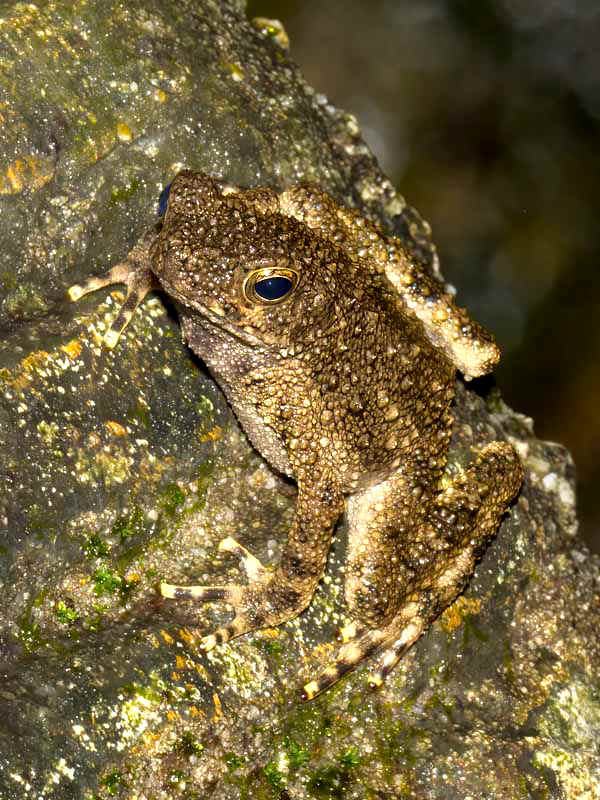
Fig 1
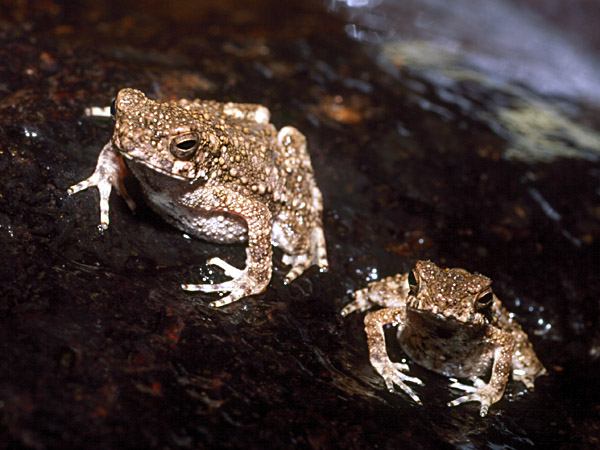
Fig 2
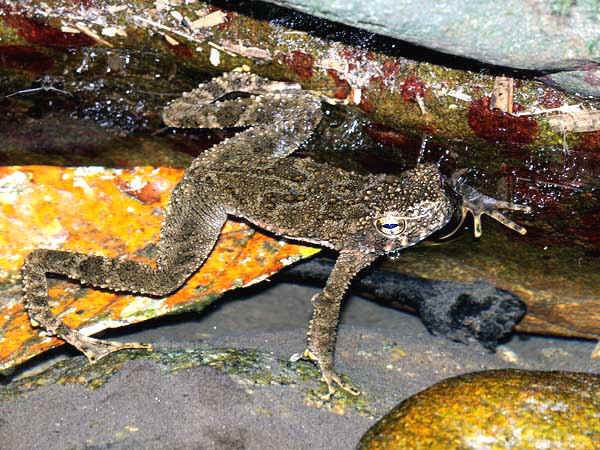
Fig 3
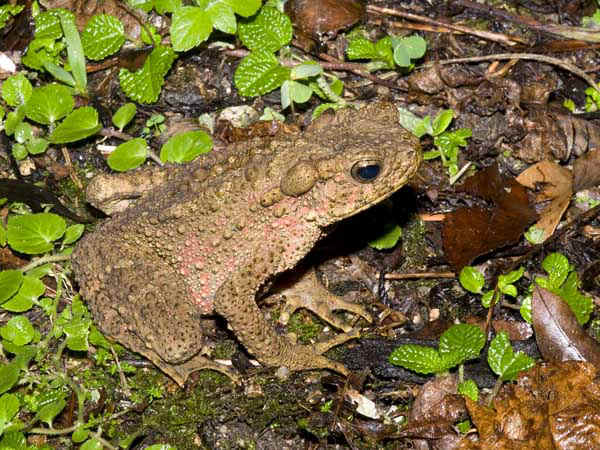
Fig 4
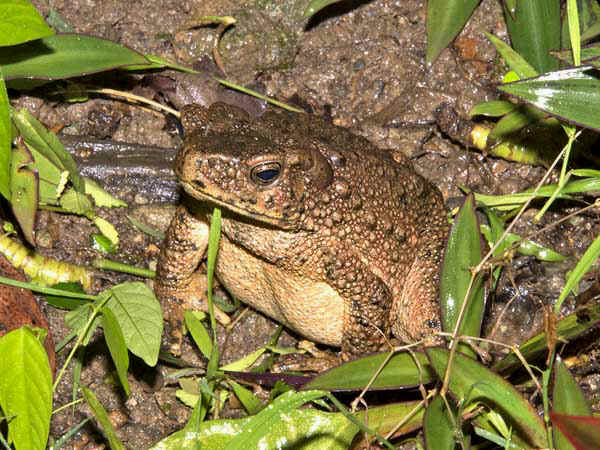
Fig 5

Fig 6

Fig 7
|
Family : BUFONIDAE
Species : Phrynoidis asper
Size (snout to vent) : Female 14 cm, Male 10 cm
Phrynoidis asper,
formerly Bufo asper, (River
Toad, Java Toad, Asian Giant Toad) is one of the largest species of toad in Southeast Asia.
It ranges from eastern and peninsular Myanmar
through peninsular Thailand and Peninsular Malaysia to the islands of Sumatra, Java and
Borneo (IUCN, 2021). The absence
of fast-flowing rivers in Singapore probably explains its absence from that
country.
This toad is often confused with Phrynoidis juxtasper (Giant River Toad),
however the latter only occurs on the islands of Sumatra and Borneo.
This widespread toad inhabits
lowland primary and mature secondary forest. At night it is active amongst
rocks and on sandbanks by fast-flowing streams and rivers at elevations of up to 1400-1500
metres. Smaller individuals tend to explore further into neighbouring
forest than fully-grown adults (Yap et al, 2014).
Female Phrynoidis asper can reach a maximum size of 14 cm
(snout-to-vent length); the presence of broad, muscular hind legs can make
adults of this species appear very large
indeed.
Its body is stout, its head is broad, and its skin is covered with abundant tubercles ('warts').
The paratoid gland (i.e. the external skin gland behind
the eye, which extends to the neck and shoulder of many toads) appears as a
series of warts, the largest of which is ovoid and rounded in shape.
Its fingers are unwebbed, but its toes are extensively webbed. It is
typically brown, dark brown or
grey-brown in colour, and the belly is pale with dark spotting.
A dietary study at Sungai Sedim, Kedah, Peninsular Malaysia identified 18
categories of food items consumed by Phrynoidis asper, with ants, termites and beetles
being the most abundant items in the analysis of stomach contents (Yap et al,
2014). The study thus confirmed this toad to be myrmecophagous i.e.
an ant-specialist favouring Formicidae and Termitoidae in its diet. Adult
toads are generally able to consumer a broader range of larger prey items.
Fig 1 : Example perched on a rocky outcrop next to a narrow stream gully at Taiping,
Perak, Peninsular
Malaysia.
Fig 2 : A pair, perhaps a female and male, clings to a slippery, streamside rock at Langkawi, Peninsular
Malaysia.
Fig 3 : Example at the margins of a forest stream at Belum, northern
Peninsular Malaysia.
Fig 4 : Large example with pink and bluish mottling on its flanks at
Fraser's Hill, Peninsular Malaysia.
Fig 5 : Large adult from secondary, hillside forest near Borobudur, Central
Java, Indonesia, with an estimated snout-vent-length of 14 cm.
Fig 6 : Juvenile next to a fast-flowing lowland stream feeding into
freshwater swamp forest at Panti Forest, Johor, Peninsular Malaysia.
Fig 7 : Close-up of an adult from Fraser's Hill, Peninsular Malaysia
showing the top of the head, nape and rounded paratoid glands (on either
side of the nape). Lines of small tubercles or warts are also present.
References :
IUCN SSC
Amphibian Specialist Group. 2021. Phrynoidis asper. The IUCN Red
List of Threatened Species 2021: e.T54579A87864714.
Yap Chee Hui,
Nurul Dalila, Shahriza Shahrudin & Ibrahim Jaafar. (2014). Feeding
Habits of River Toad Phrynoidis aspera (Anura: Bufonidae) from
Lowland Dipterocarp Forest in Kedah, Malaysia. Pensee Journal 76(5).
|